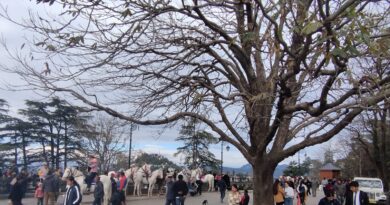Farming Insights: Palampur Agricultural University’s november advisory for farmers
Farmers in Himachal Pradesh, especially in Sirmaur district, have a valuable resource to guide their agricultural activities this season. Chaudhary Sarwan Kumar Himachal Pradesh Agricultural University, Palampur, has issued its advisory for farming practices to be followed from November 16 to November 30. These recommendations aim to enhance productivity and help farmers tackle seasonal challenges effectively.
Efficient Crop Cultivation Practices
Director of Extension Education, and Head Scientist at Krishi Vigyan Kendra Sirmaur, suggest focusing on:
Wheat: For lowland irrigated areas, sow varieties like HPW-155, VL-907, HS-507, and HPW-484. In higher regions, opt for the Saptadhara variety. Use 100 kg of seed per hectare (8 kg per bigha) for best results.
Barley: Choose BHS-400 or HBL-276 varieties.
Forage Crops: Ryegrass can also be sown during this period.
Weed Management in Wheat Fields
For early-sown wheat showing weed growth, a solution of 32 g Vesta herbicide in 60 liters of water can be sprayed using a flat-fan nozzle. Ensure proper field moisture with light irrigation 2-3 days before spraying for effective results.
Vegetable Farming Tips
This season is perfect for sowing and transplanting vegetables:
Onions: Sow varieties like Patna Red, Nasik Red, and Palam Lohit in lower and mid-hill areas.
Garlic: Plant GHC-1 or Agrifound Parvati varieties with rows spaced 20 cm apart and plants 10 cm apart.
Peas: Sow improved varieties such as Palam Samool, Punjab-89, or Azad P-3, maintaining 45-60 cm row spacing.
Root Crops: Thin extra seedlings of radish, carrot, and turnip to maintain a 7-10 cm gap between plants.
Cabbage Family: Transplant cauliflower, broccoli, and Chinese mustard with proper spacing for optimal growth.
Keep your vegetable fields irrigated and weeded at 10-15 day intervals, and use fertilizers judiciously to boost yields.
Protecting Crops from Pests and Diseases
Wheat and Barley: Treat seeds with 2.5 g of Vitavax or Bavistin per kg to prevent seed-borne diseases.
Termite Control: For affected fields, mix 2 liters of Chlorpyrifos with 25 kg of sand and apply during sowing.
Cabbage Crops: Use Chlorpyrifos to safeguard against cutworms, either by mixing it with sand or spraying a diluted solution.
Onion Nursery: Treat damping-off symptoms by irrigating beds with a Bavistin and Dithane M-45 solution.
Peas: Pre-treat seeds with Bavistin to protect against diseases.
A Season of Growth and Opportunity
This period offers excellent opportunities to grow a wide variety of crops and vegetables. By adopting these expert recommendations, farmers can ensure healthy yields and safeguard their crops, leading to a successful harvest season.



